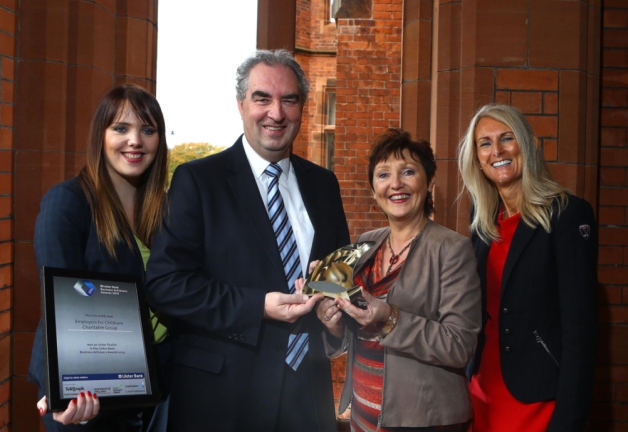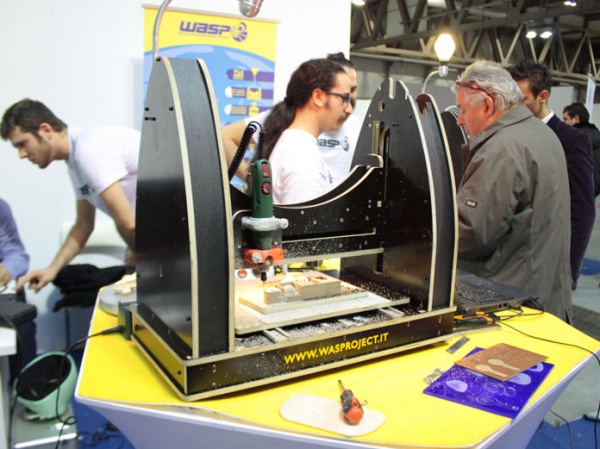Government Grants
Business Grants
Home Owner Programs
Federal Programs
About Us
Early Stage Innovations (ESI)
NASAs Space Technology Mission Directorate (STMD) hereby solicits proposals from accredited U. S. universities for innovative, early-stage space technology research of high priority to NASAs Mission Directorates.
This specific Appendix is titled Early Stage Innovations (ESI) and is one of three calls for proposals from STMDs Space Technology Research Grants (STRG) Program.
Early Career Faculty (ECF) appears as Appendix B2 under the SpaceTech-REDDI NRA.
This Appendix seeks proposals on specific space technologies that are currently at low Technology Readiness Levels (TRL).
Investment in innovative low-TRL research increases knowledge and capabilities in response to new questions and requirements, stimulates innovation, and allows more creative solutions to problems constrained by schedule and budget.
Moreover, it is investment in fundamental research activities that has historically benefited the Nation on a broader basis, generating new industries and spin-off applications.
The STRG Program within STMD is fostering the development of innovative, low-TRL technologies for advanced space systems and space technology.
The goal of this low-TRL endeavor is to accelerate the development of groundbreaking, high-risk/high-payoff space technologies, not necessarily directed at a specific mission, to support the future space science and exploration needs of NASA, other government agencies, and the commercial space sector.
Such efforts complement the other NASA Mission Directorates focused technology activities which typically begin at TRL 3 or higher.
The starting TRL of the efforts to be funded as a result of this Appendix will be TRL 1 or TRL 2; typical end TRLs will be TRL 2 or TRL 3. Please see Attachment 2 of the NRA for TRL descriptions.
This Appendix seeks proposals to develop unique, disruptive, or transformational space technologies that have the potential to lead to dramatic improvements at the system level performance, weight, cost, reliability, operational simplicity, or other figures of merit associated with space flight hardware or missions.
Although progress under an award may be incremental, the projected impact at the system level must be substantial and clearly defined.
This Appendix does not seek literature searches, survey activities or incremental enhancements to the current state of the art.
This Appendix exclusively seeks proposals that are responsive to one of the six topics described in Section 1. 3 of the ESI Appendix.
Proposals that are not responsive to any of these topics, as specifically described below, will be considered non-compliant and will not be submitted for peer review.
NASA anticipates addressing other topics in future ECF and ESI Appendix releases.
The topics described in Section 1. 3 of the ESI Appendix are aligned with NASAs 14 Space Technology Roadmaps (STRs) (http://www.nasa.gov/offices/oct/home/roadmaps/index.html), which reflect the National Research Councils (NRCs) review (http://www.nap.edu/catalog.php?record_id=13354) of these roadmaps.
The topic names are:
Topic 1 Advanced Thermal Protection Materials Modeling.
Topic 2a Uncertainty quantification for additive manufacturing.
Topic 2b Computational modeling of NDE interactions in composite structures.
Topic 3 Technologies for In Situ Utilization of Asteroid Materials.
Topic 4 Mobile Robotic Surface Probe Concepts for Planetary Exploration.
Topic 5 Kinetic Penetrators for Icy Moons.
Topic 6 Advanced Technology Habitat System Design.
For full details see the solicitation at http://nspires.nasaprs.com Notices of Intent (not mandatory) are requested by June 24, 201 4. Proposals are due on or before July 23, 201 4. Detailed submission instructions are provided in the SpaceTech-REDDI-2014 NRA.
Potential proposers and their proposing organizations are urged to familiarize themselves with the submission system(s), ensure they are registered in NSPIRES, and submit the required proposal materials well in advance of the deadline.
Technical and programmatic comments and questions may be addressed by e-mail to the Space Technology Research Grants Program Executive, Claudia Meyer, at hq-esi-call@mail.nasa.gov.
Procurement questions may be addressed by e-mail to the procurement point of contact, Andre Sheppard, ESI Procurement Official, Office of Headquarters Procurement, at hq-esi-call@mail.nasa.gov.
Responses to inquiries will be answered by e-mail and may also be included in the Frequently Asked Questions (FAQ) document located on the NSPIRES page associated with the Appendix; anonymity of persons/institutions who submit questions will be preserved.
This specific Appendix is titled Early Stage Innovations (ESI) and is one of three calls for proposals from STMDs Space Technology Research Grants (STRG) Program.
Early Career Faculty (ECF) appears as Appendix B2 under the SpaceTech-REDDI NRA.
This Appendix seeks proposals on specific space technologies that are currently at low Technology Readiness Levels (TRL).
Investment in innovative low-TRL research increases knowledge and capabilities in response to new questions and requirements, stimulates innovation, and allows more creative solutions to problems constrained by schedule and budget.
Moreover, it is investment in fundamental research activities that has historically benefited the Nation on a broader basis, generating new industries and spin-off applications.
The STRG Program within STMD is fostering the development of innovative, low-TRL technologies for advanced space systems and space technology.
The goal of this low-TRL endeavor is to accelerate the development of groundbreaking, high-risk/high-payoff space technologies, not necessarily directed at a specific mission, to support the future space science and exploration needs of NASA, other government agencies, and the commercial space sector.
Such efforts complement the other NASA Mission Directorates focused technology activities which typically begin at TRL 3 or higher.
The starting TRL of the efforts to be funded as a result of this Appendix will be TRL 1 or TRL 2; typical end TRLs will be TRL 2 or TRL 3. Please see Attachment 2 of the NRA for TRL descriptions.
This Appendix seeks proposals to develop unique, disruptive, or transformational space technologies that have the potential to lead to dramatic improvements at the system level performance, weight, cost, reliability, operational simplicity, or other figures of merit associated with space flight hardware or missions.
Although progress under an award may be incremental, the projected impact at the system level must be substantial and clearly defined.
This Appendix does not seek literature searches, survey activities or incremental enhancements to the current state of the art.
This Appendix exclusively seeks proposals that are responsive to one of the six topics described in Section 1. 3 of the ESI Appendix.
Proposals that are not responsive to any of these topics, as specifically described below, will be considered non-compliant and will not be submitted for peer review.
NASA anticipates addressing other topics in future ECF and ESI Appendix releases.
The topics described in Section 1. 3 of the ESI Appendix are aligned with NASAs 14 Space Technology Roadmaps (STRs) (http://www.nasa.gov/offices/oct/home/roadmaps/index.html), which reflect the National Research Councils (NRCs) review (http://www.nap.edu/catalog.php?record_id=13354) of these roadmaps.
The topic names are:
Topic 1 Advanced Thermal Protection Materials Modeling.
Topic 2a Uncertainty quantification for additive manufacturing.
Topic 2b Computational modeling of NDE interactions in composite structures.
Topic 3 Technologies for In Situ Utilization of Asteroid Materials.
Topic 4 Mobile Robotic Surface Probe Concepts for Planetary Exploration.
Topic 5 Kinetic Penetrators for Icy Moons.
Topic 6 Advanced Technology Habitat System Design.
For full details see the solicitation at http://nspires.nasaprs.com Notices of Intent (not mandatory) are requested by June 24, 201 4. Proposals are due on or before July 23, 201 4. Detailed submission instructions are provided in the SpaceTech-REDDI-2014 NRA.
Potential proposers and their proposing organizations are urged to familiarize themselves with the submission system(s), ensure they are registered in NSPIRES, and submit the required proposal materials well in advance of the deadline.
Technical and programmatic comments and questions may be addressed by e-mail to the Space Technology Research Grants Program Executive, Claudia Meyer, at hq-esi-call@mail.nasa.gov.
Procurement questions may be addressed by e-mail to the procurement point of contact, Andre Sheppard, ESI Procurement Official, Office of Headquarters Procurement, at hq-esi-call@mail.nasa.gov.
Responses to inquiries will be answered by e-mail and may also be included in the Frequently Asked Questions (FAQ) document located on the NSPIRES page associated with the Appendix; anonymity of persons/institutions who submit questions will be preserved.
Agency: National Aeronautics and Space Administration
Office: NASA Headquarters
Estimated Funding: Not Available
Office: NASA Headquarters
Estimated Funding: Not Available
Obtain Full Opportunity Text:
Link to the Early Stage Innovations solicitation on NSPIRES website
Additional Information of Eligibility:
See Early Stage Innovations (ESI) solicitation for complete eligibility details.
Full Opportunity Web Address:
http://tinyurl.com/NASA-14ESI
Contact:
Claudia MeyerSpace Technology Research Grants Program ExecutiveSpace Technology Mission Directorate, NASA Headquarters
Agency Email Description:
hq-esi-call@mail.nasa.gov
Agency Email:
hq-esi-call@mail.nasa.gov
Date Posted:
2014-05-30
Application Due Date:
2014-07-23
Archive Date:
2014-08-20
Social Entrepreneurship
Spotlight
Childcare Charitable Group Named Top Social Enterprise

Employers For Childcare Charitable Group (EFCG), a Lisburn-based charity, has been crowned top Social Enterprise at the Ulster Final of 2014’s Ulster Bank Business Achievers Awards. EFCG seeks to “make it easier for parents with dependent children to get into work and to stay in work.”

